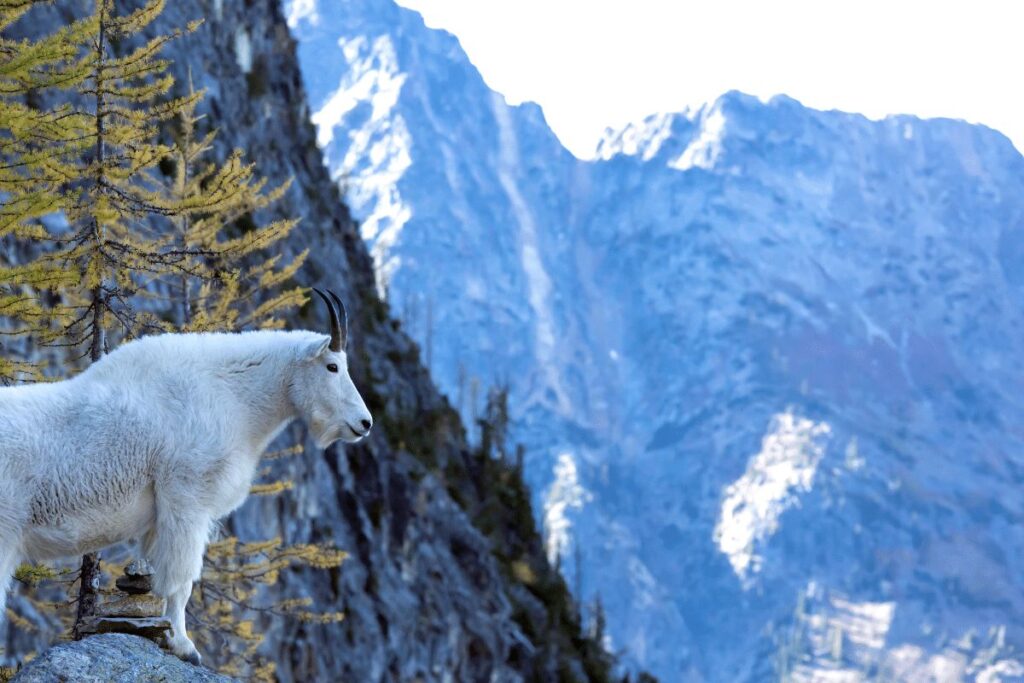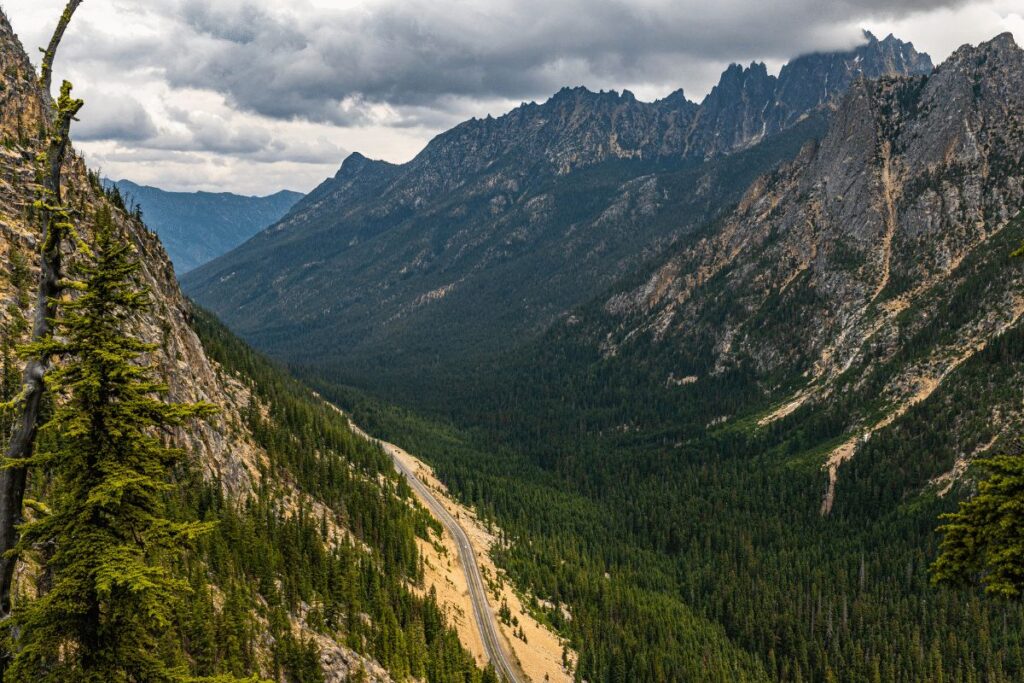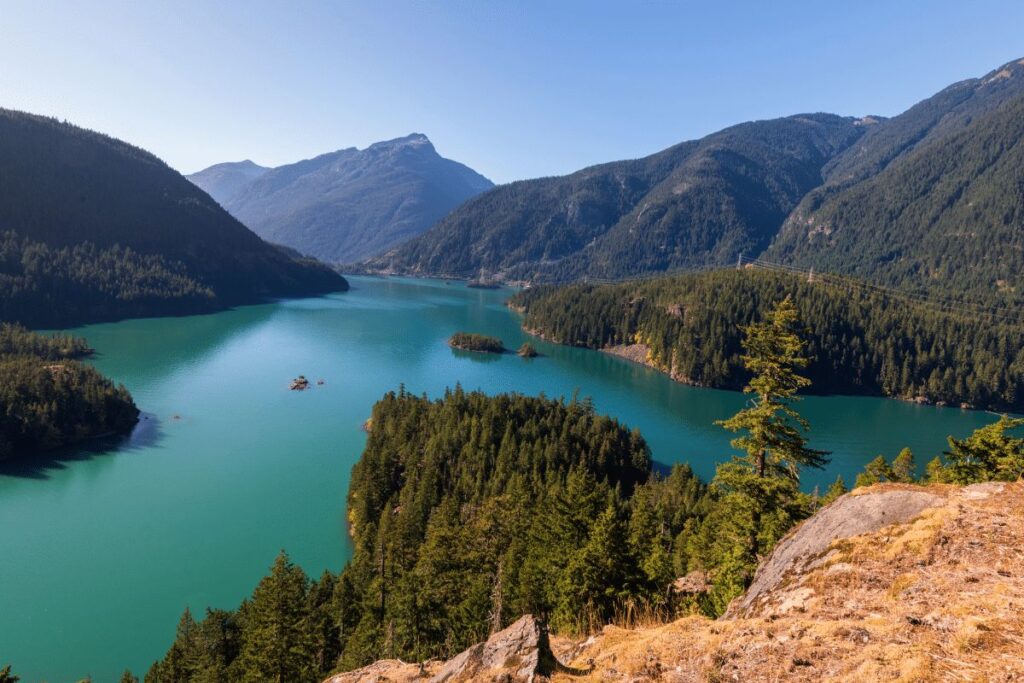Spot 14 majestic animals in North Cascades National Park and best hiking areas for wildlife.
Pack your binoculars and lace up your hiking boots – North Cascades National Park awaits with a wildlife adventure like no other. Imagine walking trails that weave through nature’s untamed art gallery, each turn unveiling a different living masterpiece.
This park isn’t just a walk in the woods; it’s a full-on nature safari. We’re going to guide you through the wild heart of the Cascades and spotlight the 14 incredible animals that call it home.
Ready to meet the locals, from stealthy lynx to majestic moose? Let’s embark on this journey together and find out the best spots to play peekaboo with nature’s finest in the North Cascades.
Gray Wolves
There are currently around three known packs of gray wolves in North Cascades National Park. These packs tend to stick to the more remote, less-traveled areas of the park. While it is possible to see wolves in other parts of the park, your chances are much higher if you go off the beaten path.
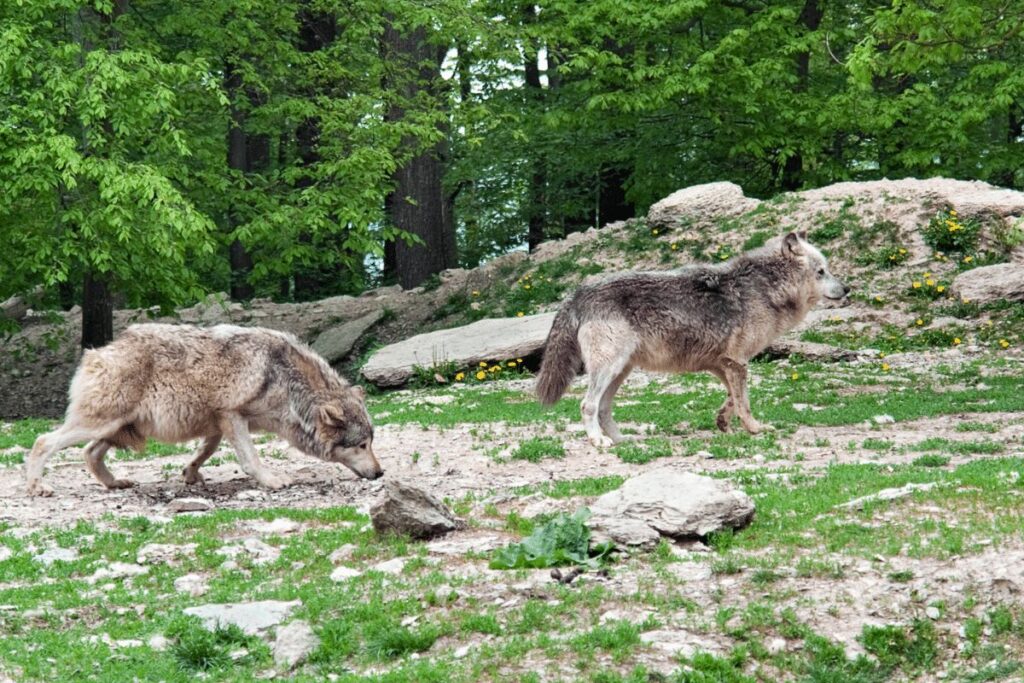
Gray wolves are generally shy around humans, but they are also very curious. If you do see a wolf, do not approach it – give it plenty of space and enjoy the sighting from a distance.
Grizzly Bears
Grizzly bears are large animals, typically weighing between 300 and 800 pounds. They have brown fur that can range from light blond to almost black. Their necks and shoulders are often covered in lighter-colored “grizzled” hairs. Adult females (sows) average about 7 feet long from nose to tail, while adult males (boars) can be up to 9 feet long.
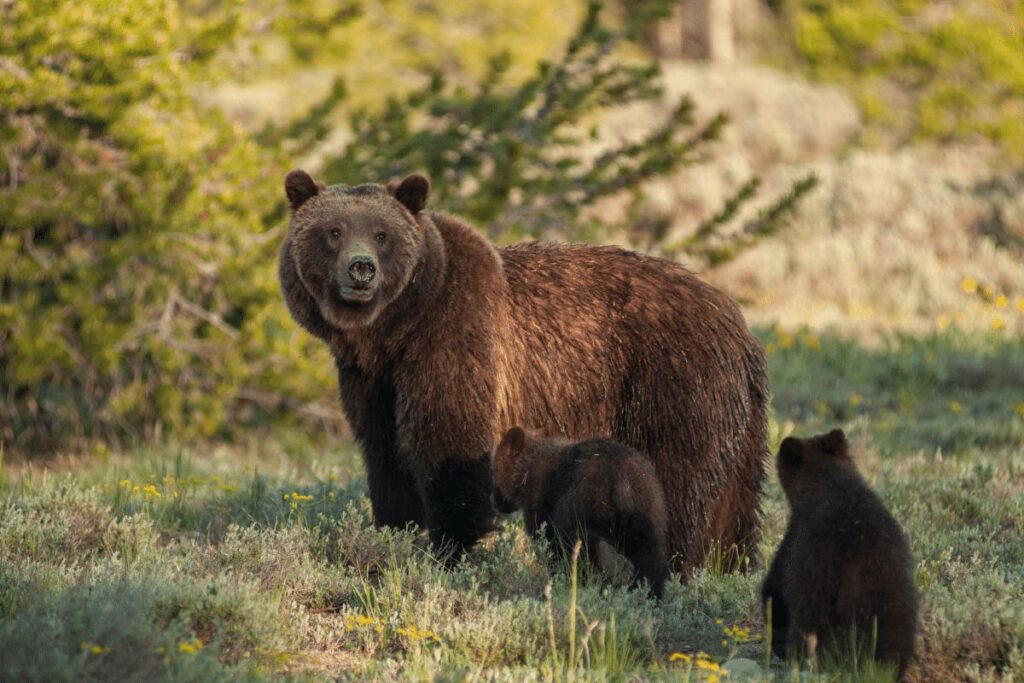
If you’re lucky enough to see a grizzly bear while hiking in North Cascades National Park, remember to give them plenty of space. Never approach a bear, even if it seems tame. And never feed a bear – it’s dangerous for both you and the bear!
Canada Lynx
The Canada lynx is a species of wild cat that ranges across North America. In the Cascades, they are most commonly found in the northern parts of the park, near the Canadian border. These shy animals are elusive and seldom seen, but if you’re lucky enough to catch a glimpse of one, you’ll be rewarded with a truly majestic sight.
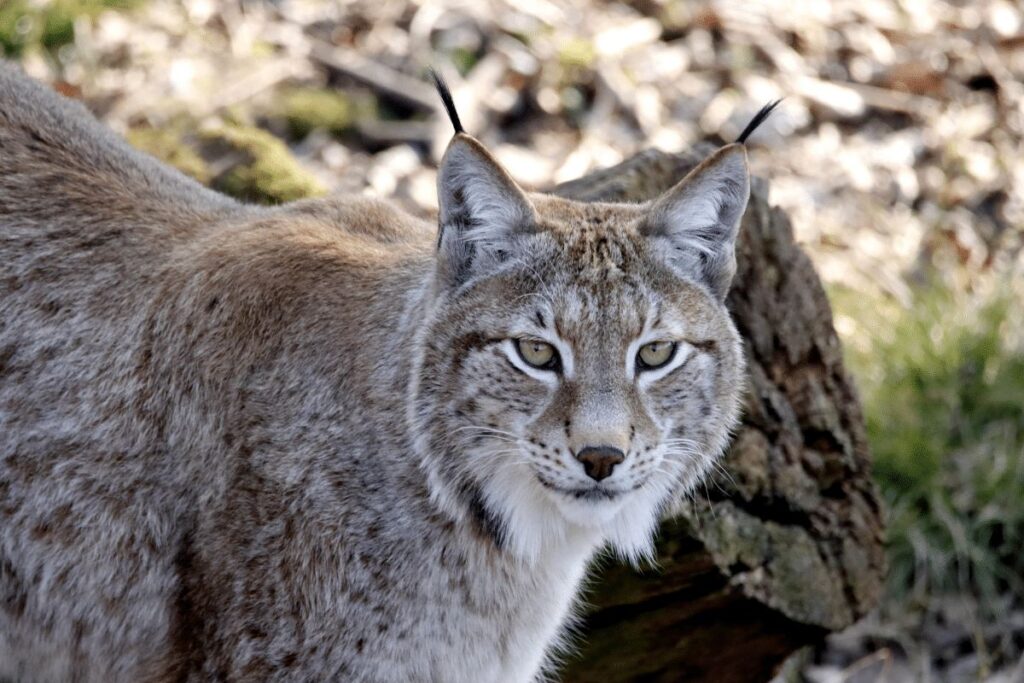
The Canada lynx is a medium-sized cat, with males averaging about 30 pounds and females around 20 pounds. They have long legs and large paws, which help them maneuver through deep snow. Their thick fur is mostly gray or brown, with black stripes on their legs and white spots on their faces.
These animals are very shy by nature and will likely run away if they feel threatened. Just enjoy the moment and take in the beauty of these rare creatures!
Moose
Moore are often seen near streams or lakes, eating the aquatic plants. We even saw a mom and her two calves at one point. It was really cool to see such massive animals in their natural habitat.
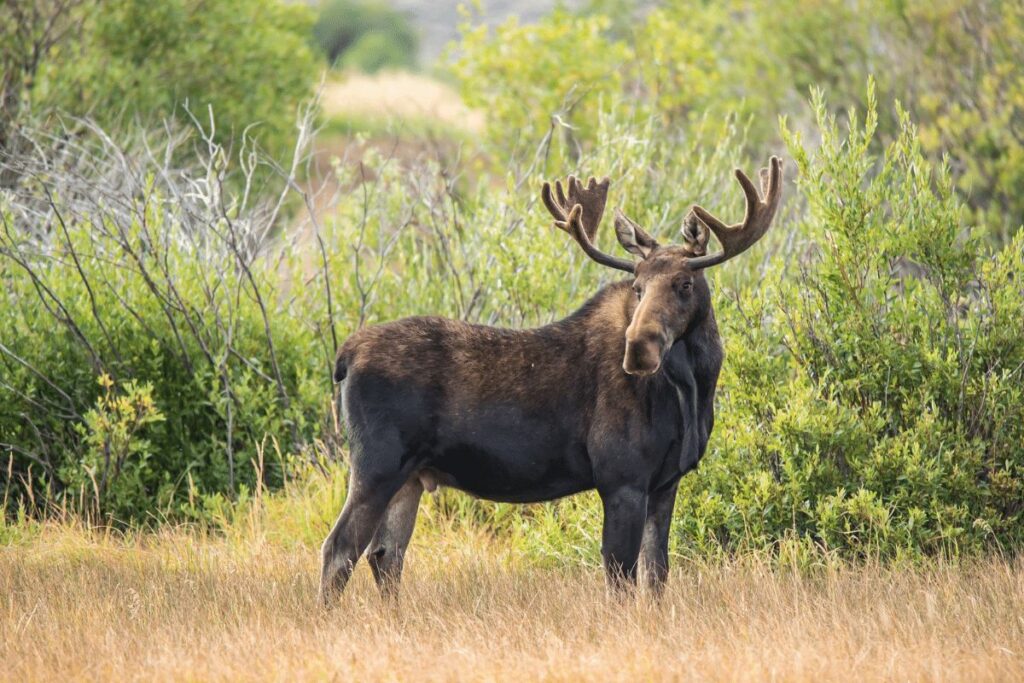
The rangers at the park also told us that moose sightings have increased in recent years, as they have adapted to the warmer climate and higher elevation of the park. The moose are an important part of the park’s ecosystem and we were lucky enough to catch a glimpse of them during our visit!
Wolverine
One of the most popular animals in North Cascades National Park is the wolverine. These fierce predators are known for their strength and cunning, and are a sight to behold in the wild. While they are not often seen by hikers, there have been sightings of wolverines in the park, and they are definitely worth keeping an eye out for.
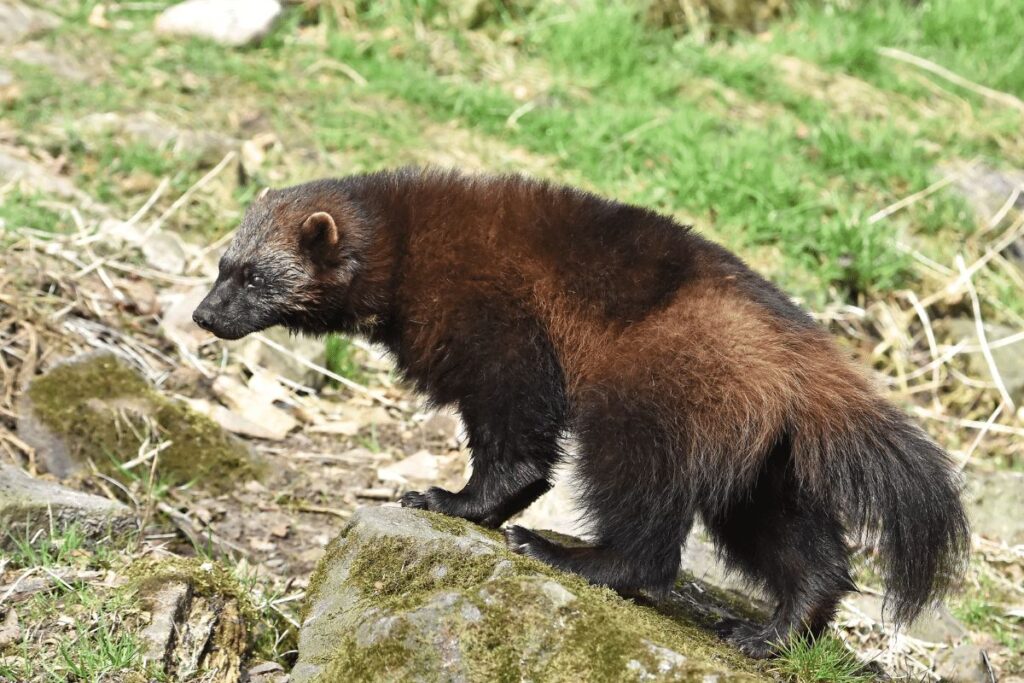
Wolverines live in the dense forests of the North Cascades, and they are most active during the winter months. During this time, they often travel throughout the park in search of food, while also defending their territory against other animals. Due to their elusive nature, wolverines can be difficult to spot, so if you do happen to catch a glimpse of one be sure to take a picture for posterity!
River Otters
River otters are one of the most playful animals in North Cascades National Park. They can be seen frolicking in the water or on land, and are always up for a game of chase.
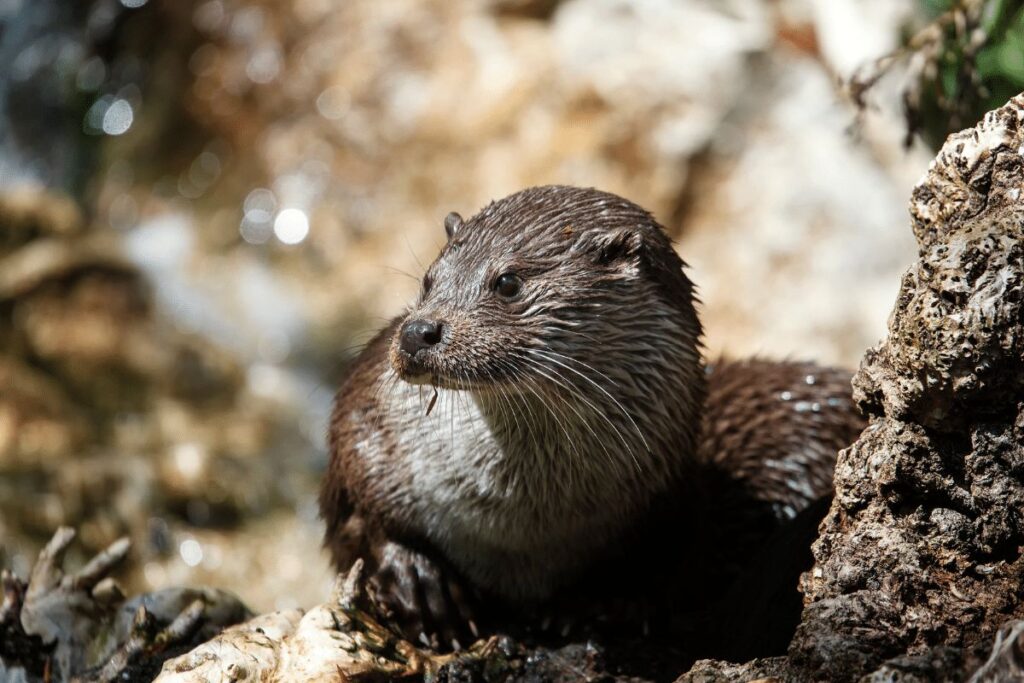
These intelligent creatures are also very curious, and will often approach hikers to check them out. Be sure to give them a wide berth, as they can be quite mischievous!
Cougars
Cougars are one of the most feared predators in North America, and with good reason. These massive cats can grow up to six feet long and weigh over 200 pounds, making them more than capable of taking down a human. However, attacks on humans are rare, and cougars typically prefer to avoid contact with us altogether.
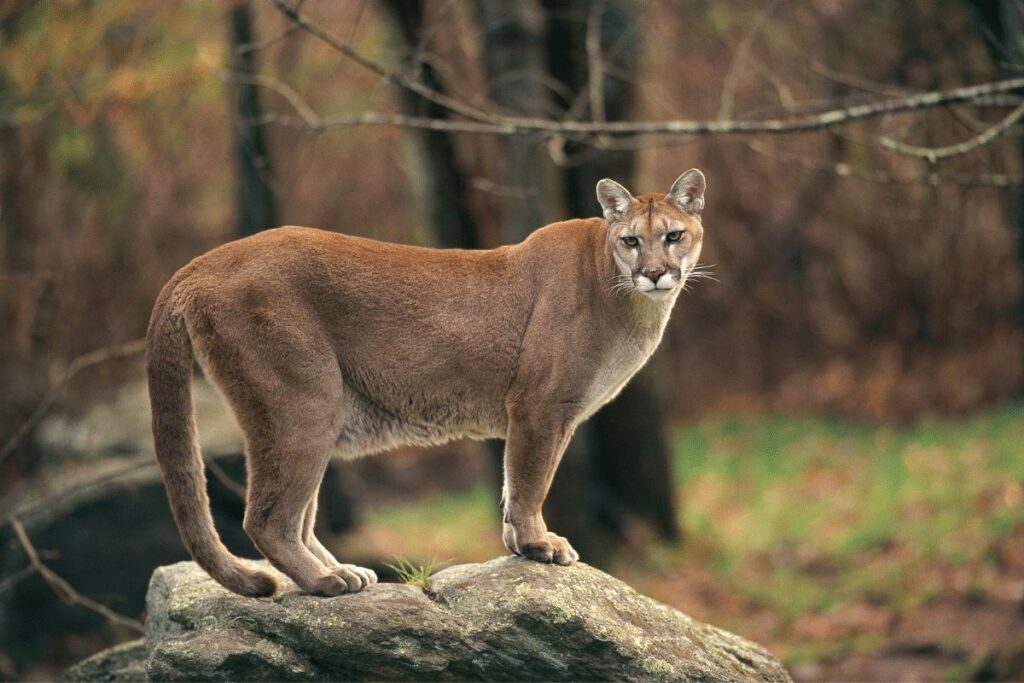
In North Cascades National Park, cougars are most often seen around dawn or dusk, when they’re hunting for their favorite prey: deer. If you’re lucky enough to spot a cougar in the wild, take care not to startle it or get too close. Remember, these animals are wild and dangerous, and should be respected as such.
Bobcats
In North Cascades National Park, we saw a variety of animals including deer, elk, bobcats, and more. The most memorable experience was seeing a bobcat up close.
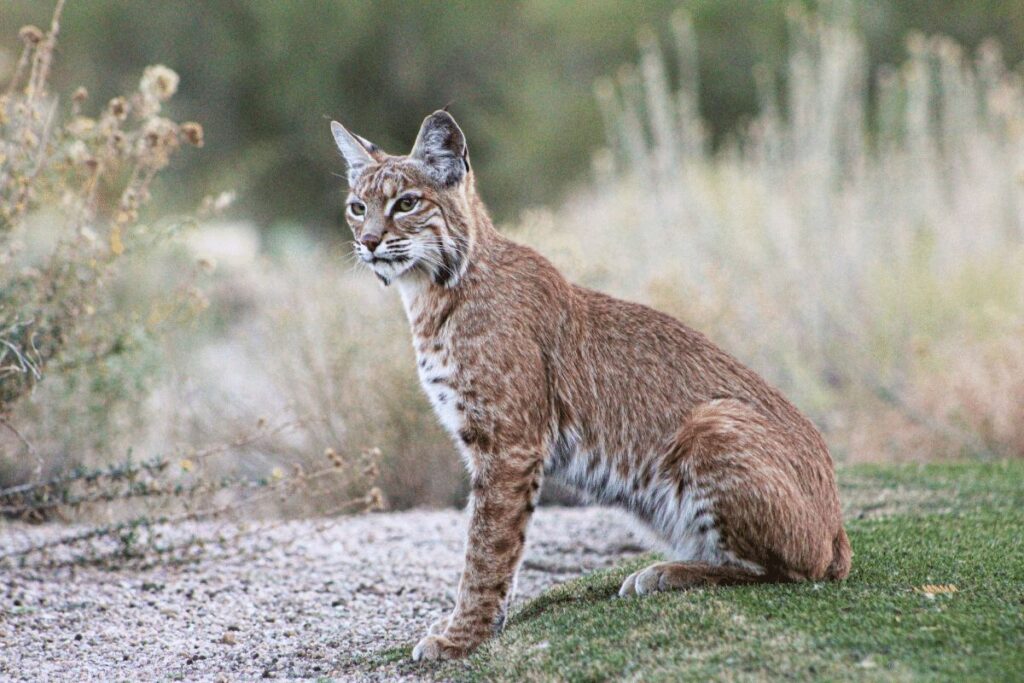
We were hiking on one of the trails when we saw something move in the bushes. At first, we thought it was a deer or elk, but as we got closer, we realized it was a bobcat! It was so cool to see this wild animal up close. We watched it for a few minutes before it ran off into the woods.
Seeing wildlife in their natural habitat is one of the best parts about hiking in national parks. If you’re lucky, you might even get to see a bobcat!
Black Bear
We were thrilled to see a black bear on our hike through North Cascades National Park! We spotted the bear near a stream, where it was fishing for salmon. It was an amazing sight to see such a large animal in its natural habitat.
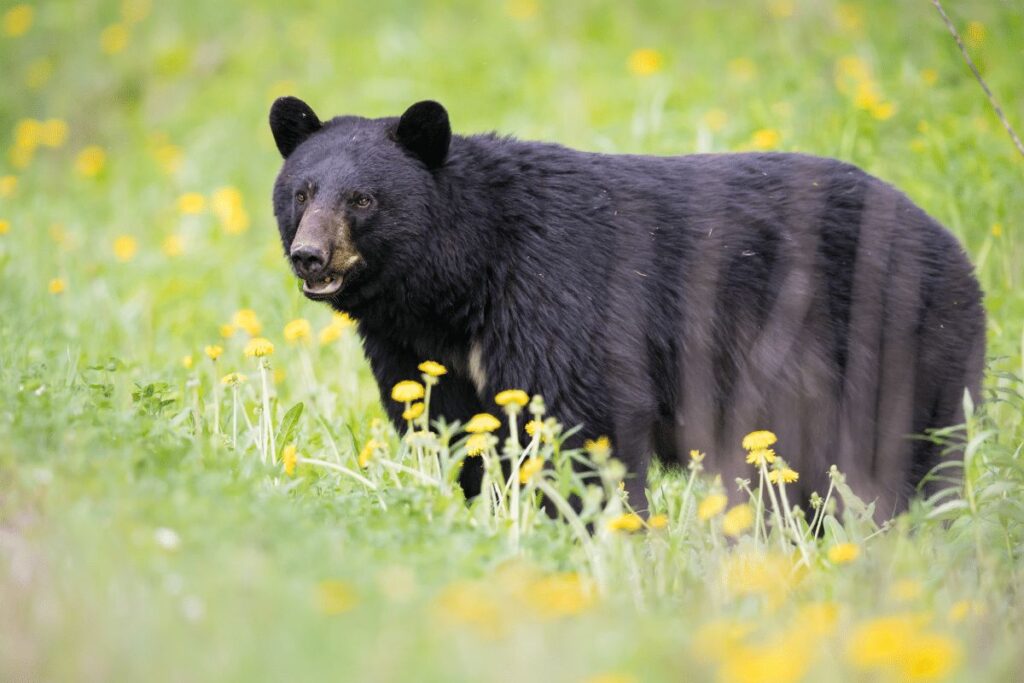
The black bear is the largest land predator in North America and can weigh up to 600 pounds. They are excellent swimmers and climbers, and are known to eat just about anything they can find. In North Cascades National Park, black bears primarily eat plants and berries, but will also eat fish, small mammals, and carrion.
Seeing a black bear in the wild is truly a memorable experience. If you’re lucky enough to spot one on your travels, be sure to give it plenty of space and enjoy the moment from afar.
Bats
There are many different types of bats in North Cascades National Park, including the little brown bat, big brown bat, and Yuma myotis. Bats are important to the ecosystem because they help control insect populations.
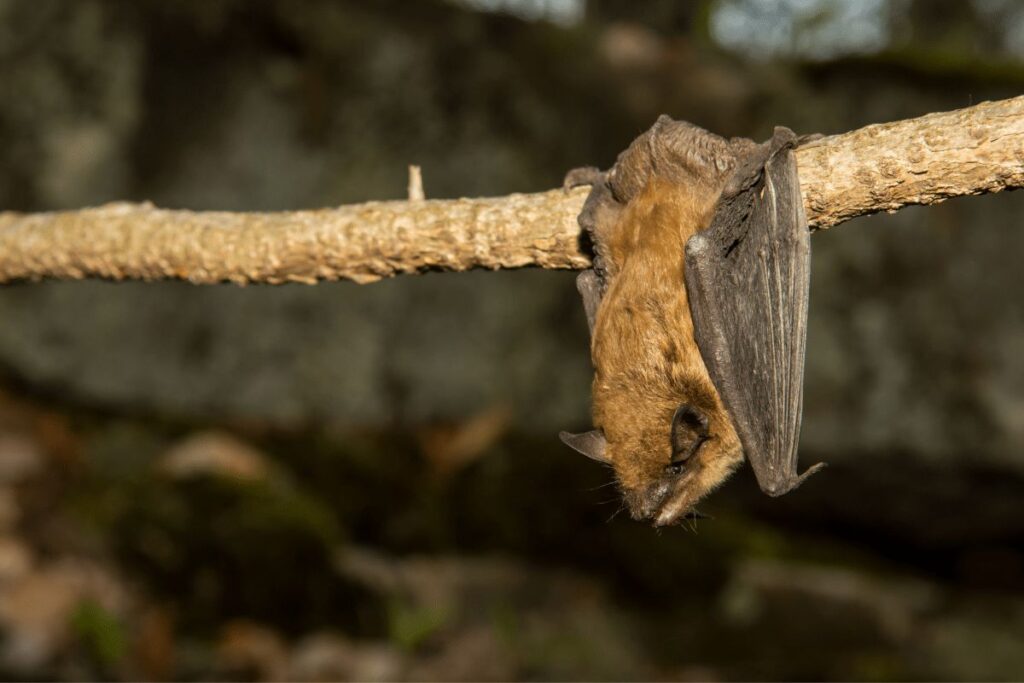
You may see bats flying at dusk or dawn, but they are also active during the day. If you hear a loud “chirping” sound coming from a bat, it is actually echolocating, or using sound waves to navigate and find food.
Mule Deer
Mule deer are common in the North Cascades and can be seen throughout the park. They are especially active in meadows, grasslands, and along forest edges. Look for them near roadsides too!
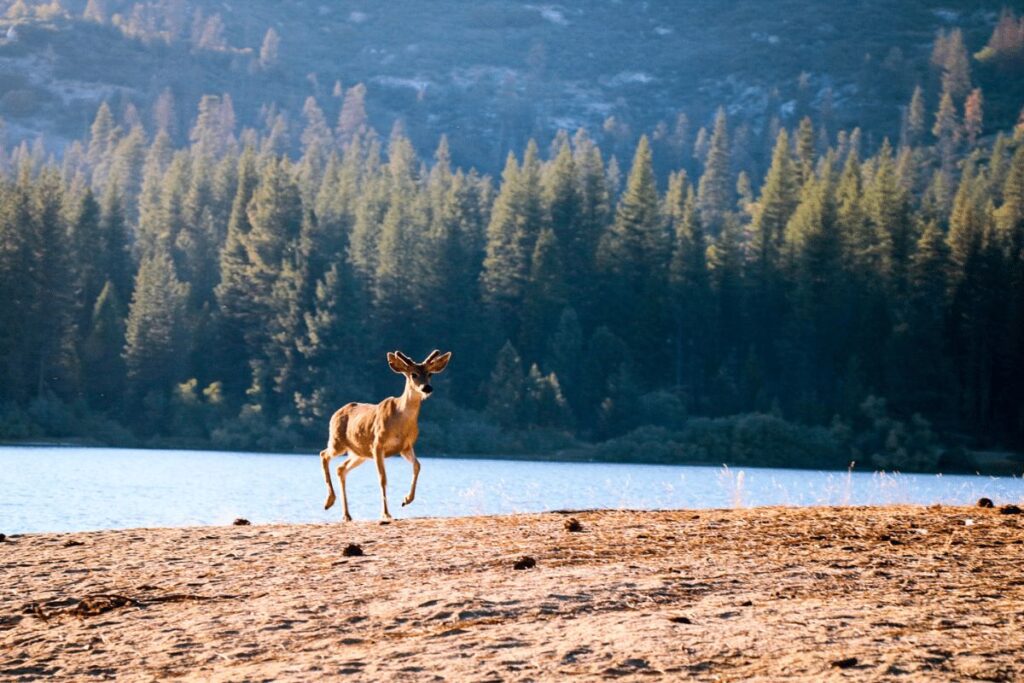
Mule deer are generally active during the day, but especially during dawn and dusk. Look for herds of several deer grazing in open meadows or along roadsides.
Elk
Elk are one of the most popular animals in North Cascades National Park. These majestic creatures can be seen grazing in meadows or along rivers. Elk are not shy and will often approach hikers for a photo opportunity.
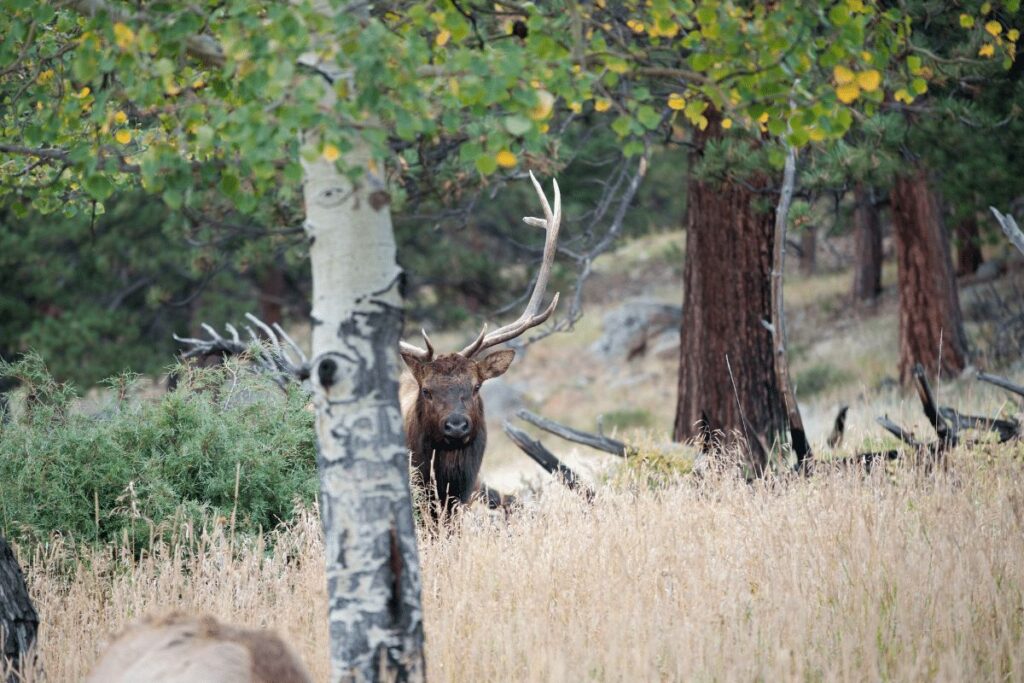
If you’re lucky enough to see an elk in the wild, be sure to give it plenty of space. These animals can be unpredictable and dangerous if provoked.
During the summer months, elk can be found in higher elevations near glaciers and alpine meadows. However, some elk may roam lower elevations year-round.
Elk are an integral part of the North Cascades’ ecology, providing food for predators such as wolves and cougars. They also play an important role in maintaining the park’s biodiversity by dispersing seeds and serving as prey for other animals.
Mountain Goat
If you’re lucky enough to spot a mountain goat while hiking in North Cascades National Park, you’re in for a treat. These sure-footed animals are a delight to watch as they deftly navigate the steep, rocky terrain.
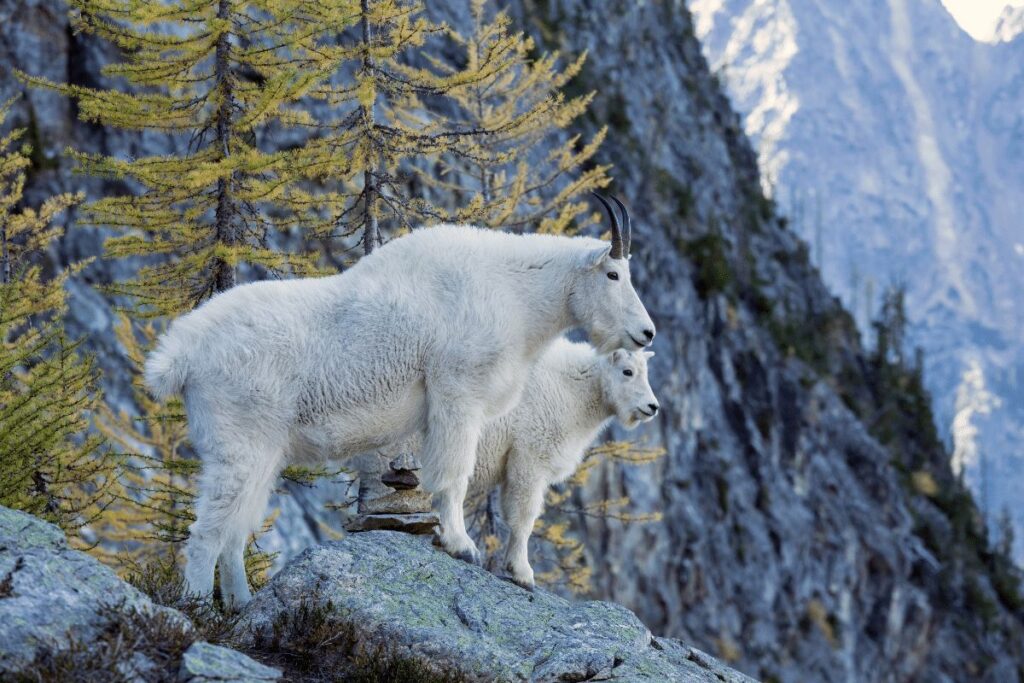
Mountain goats are actually not true goats at all, but rather members of the antelope family. They are well-adapted to life in the high mountains, with thick woolly coats that keep them warm in even the coldest temperatures. Their hooves are also specially adapted for climbing, with hard outer shells and soft inner pads that help them grip the rock.
Mountain goats are generally shy animals and will usually flee if they spot humans. However, if you’re patient and quiet, you may be able to get close enough for some great photos. Just be sure not to get too close – mountain goats can be aggressive if they feel threatened.
Hoary Marmots
The North Cascades National Park is home to many different animals, including the hoary marmot. Marmots are large ground squirrels that can be found in North America, Europe, and Asia. Hoary marmots are the largest species of marmot, and they are easily recognizable by their thick fur coats.
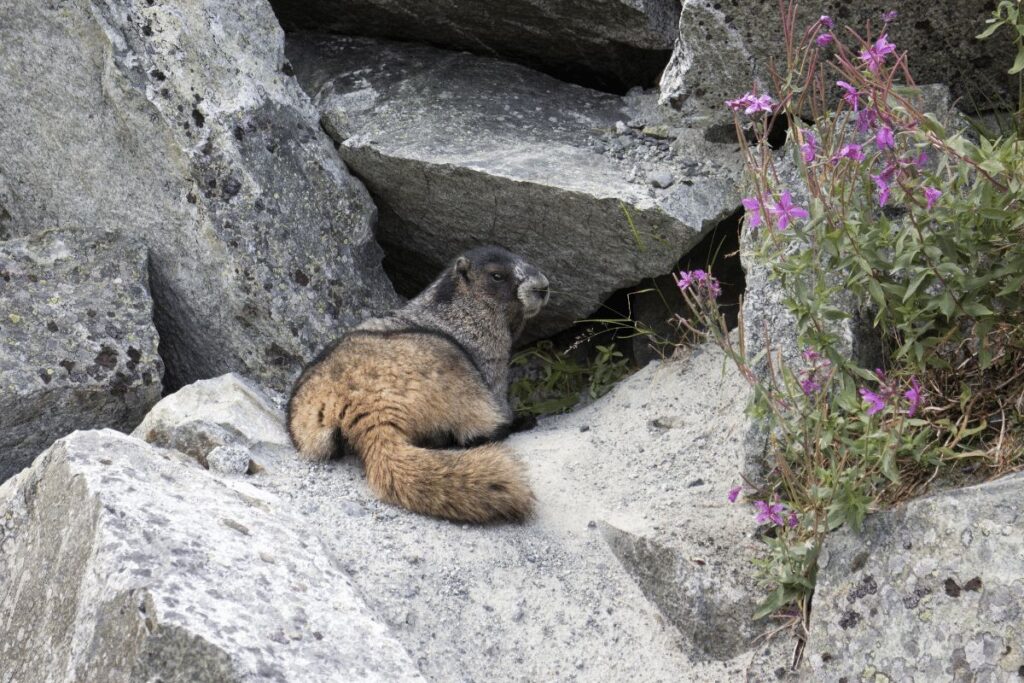
These furry creatures are often seen basking in the sun on rocks or climbing trees in search of food.
Marmots are generally shy animals, but they will approach humans if they think there is food to be had. They have a diet that consists mostly of plants, but they will also eat small animals if given the opportunity. Hoary marmots typically mate in late summer and give birth to two or three young in early spring.
If you’re lucky enough to see a hoary marmot while hiking in the North Cascades National Park, be sure to watch from a distance and do not attempt to feed them. These adorable animals are an important part of the park’s ecosystem and should be respected as such.
The Best Wildlife Viewing Areas In North Cascades National Park
North Cascades National Park is one of the most beautiful and wild places in the United States. The park is home to a variety of wildlife, including grizzly bears, wolves, mountain lions, and more. Visitors can see these animals in their natural habitat and learn about their behavior and ecology.
North Cascades National Park is also a great place for hiking, camping, and bird watching. There are many trails to explore, and the scenery is breathtaking. The park is open all year round, so there are plenty of opportunities to see wildlife in action.
Tips for Viewing Wildlife in the Park
When venturing out into North Cascades National Park to view wildlife, there are a few things to keep in mind in order to have the best experience possible. First, be sure to give animals their space and do not approach them too closely.
Not only is this respectful of the animal, but it also keeps you safe. Second, be patient when waiting for an animal to appear – sometimes they may take their time or may only show themselves for a brief moment. Third, bring binoculars or a camera with a zoom lens to get a better look at the animals from a distance. And finally, remember that wildlife is active all year round, so there is never a bad time to go looking for it!
Mount Baker Wilderness
The Mount Baker Wilderness is one of the most popular wilderness areas in North Cascades National Park. The area is known for its spectacular scenery, abundant wildlife, and challenging hikes.
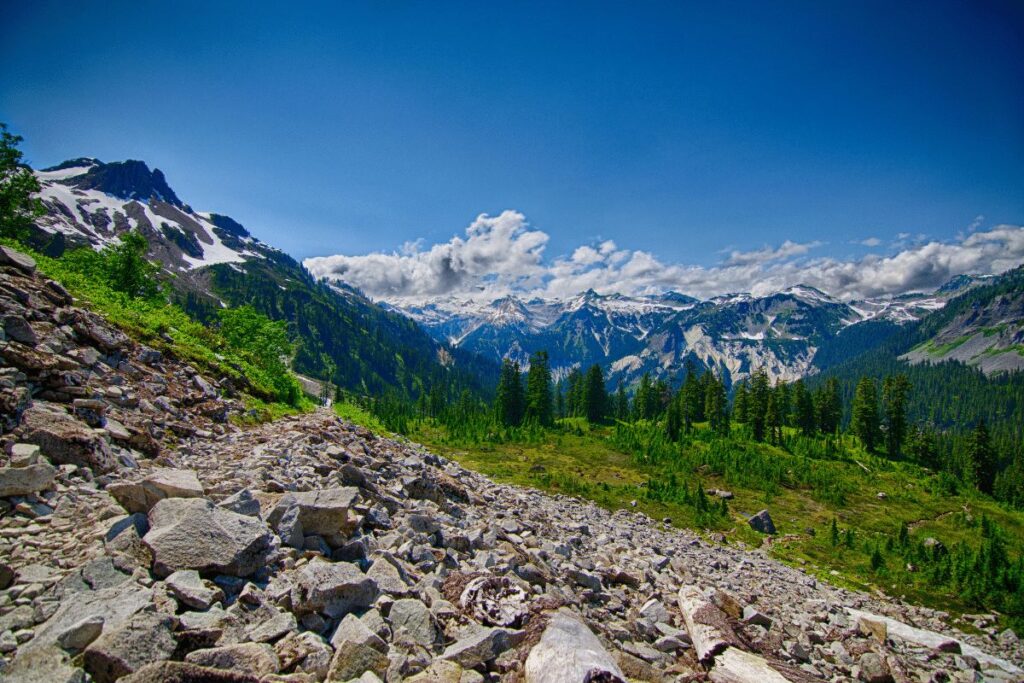
There are dozens of hikes to choose from in the Mount Baker Wilderness, ranging from easy day hikes to multi-day backpacking trips. Some of the most popular trails include the Chain Lakes Loop, Excelsior Pass Loop, and Table Mountain Traverse.
The scenery in the Mount Baker Wilderness is truly breathtaking. towering peaks, pristine alpine lakes, and old-growth forests abound. Wildlife is also plentiful in the area, with sightings of black bears, mountain goats, elk, and deer being common.
If you’re looking for an adventure in North Cascades National Park, the Mount Baker Wilderness is a great place to start!
Lake Chelan and Stehekin Valley
Lake Chelan and Stehekin Valley are two of the best places to view wildlife in North Cascades National Park. The park is home to a variety of animals, including black bears, cougars, eagles, and wolverines. Visitors can see these animals in their natural habitat by hiking, biking, or driving through the park.
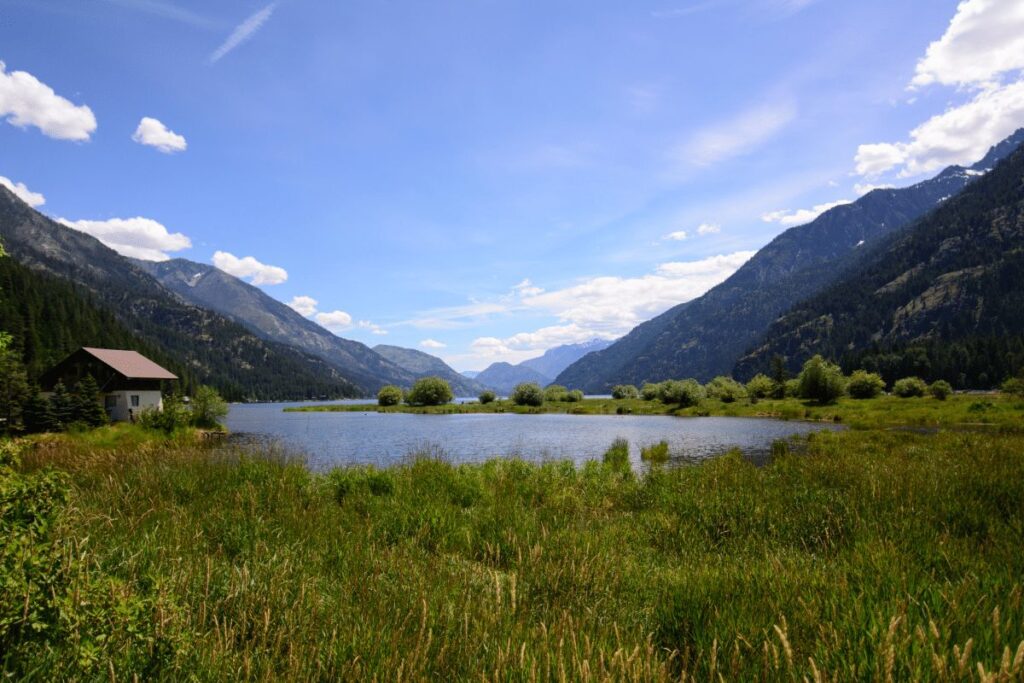
The Lake Chelan area is especially good for birdwatching. There are many different species of birds that can be seen in the area, including Bald Eagles, Ospreys, and Great Blue Herons. The Stehekin Valley is also home to a variety of animals, including deer, elk, and bighorn sheep.
both areas offer great opportunities to see wildlife in North Cascades National Park. So get out there and explore!
Pasayten Wilderness
The Pasayten Wilderness is a remote and rugged area in North Cascades National Park. This wilderness is home to an abundance of wildlife, including bears, cougars, deer, elk, and many other species. The best time to view wildlife in the Pasayten Wilderness is in the early morning or evening hours. During these times, the animals are most active and can be seen feeding, traveling, and playing.
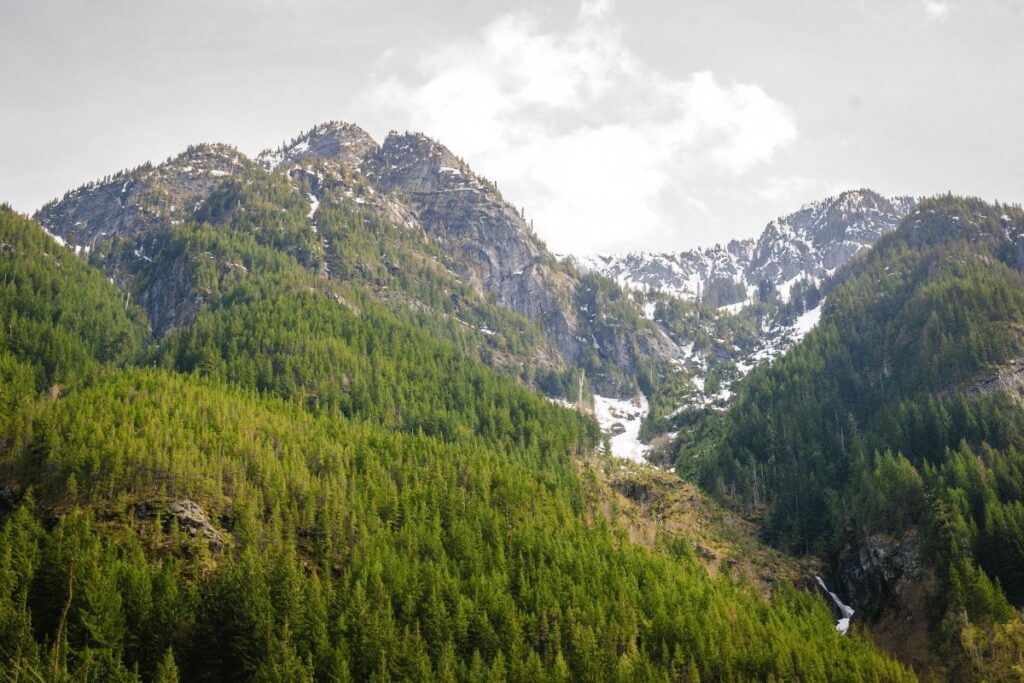
The Pasayten Wilderness is known for its diverse terrain and stunning views. It contains a variety of habitats, including subalpine meadows, old-growth forests, and majestic alpine peaks. The trail network in this area spans more than 700 miles and offers spectacular opportunities for both day hikes and backpacking trips. The North Cascades Highway runs through the western side of the wilderness and provides access to some of the most popular destinations.
The Pasayten Wilderness is also home to several rivers, lakes, and creeks. These waterways provide excellent trout fishing opportunities as well as swimming holes for those looking for a refreshing dip on hot summer days. Additionally, there are plenty of trails for mountain biking, horseback riding, and even snowshoeing during the winter months.
No matter what your outdoor interests are, you are sure to find something to enjoy in the Pasayten Wilderness!
North Cascades Highway Corridor
The North Cascades Highway Corridor is one of the best wildlife viewing areas in North Cascades National Park. The corridor runs along the north side of the park and provides stunning views of the Cascade Mountains, glacier-fed lakes, and wildlife.
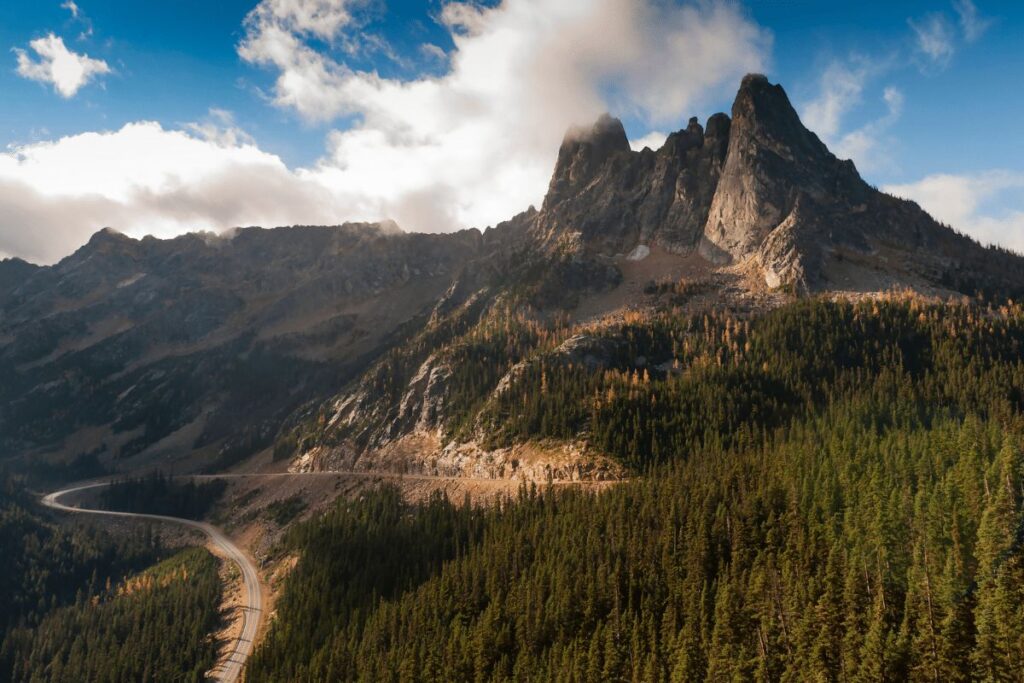
Visitors can see a variety of animals including bears, deer, elk, eagles, and ospreys. There are also numerous hiking trails and camping sites located along the corridor.
Glacier Peak Wilderness
The Glacier Peak Wilderness is one of the most popular wildlife viewing areas in North Cascades National Park. The area is home to a variety of animals, including mountain goats, bighorn sheep, black bears, and grizzly bears. Visitors can also expect to see a wide variety of birds, including bald eagles and peregrine falcons.
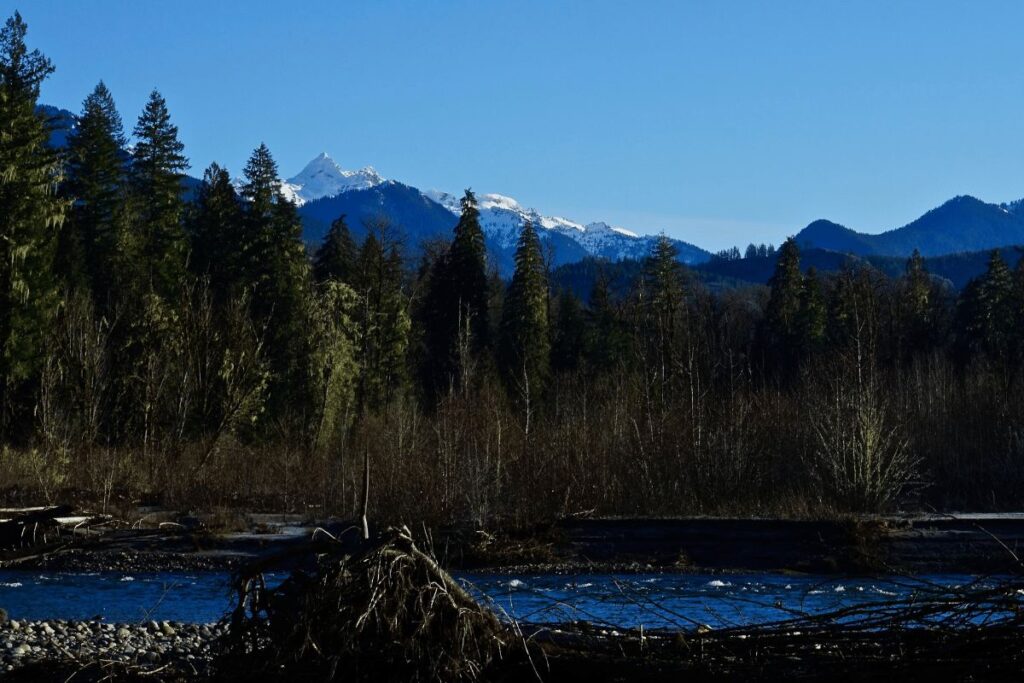
The Glacier Peak Wilderness is located in the northern part of the park and covers an area of over 400 square miles. The area is accessible via a number of trails, including the Cascade Pass Trail, which offers stunning views of the surrounding mountains.
Skagit Valley Provincial Park
Skagit Valley Provincial Park is an excellent place for wildlife viewing. There are a variety of animals that can be seen in the park, including deer, elk, bears, cougars, and eagles. The best time to view wildlife is in the early morning or evening hours.
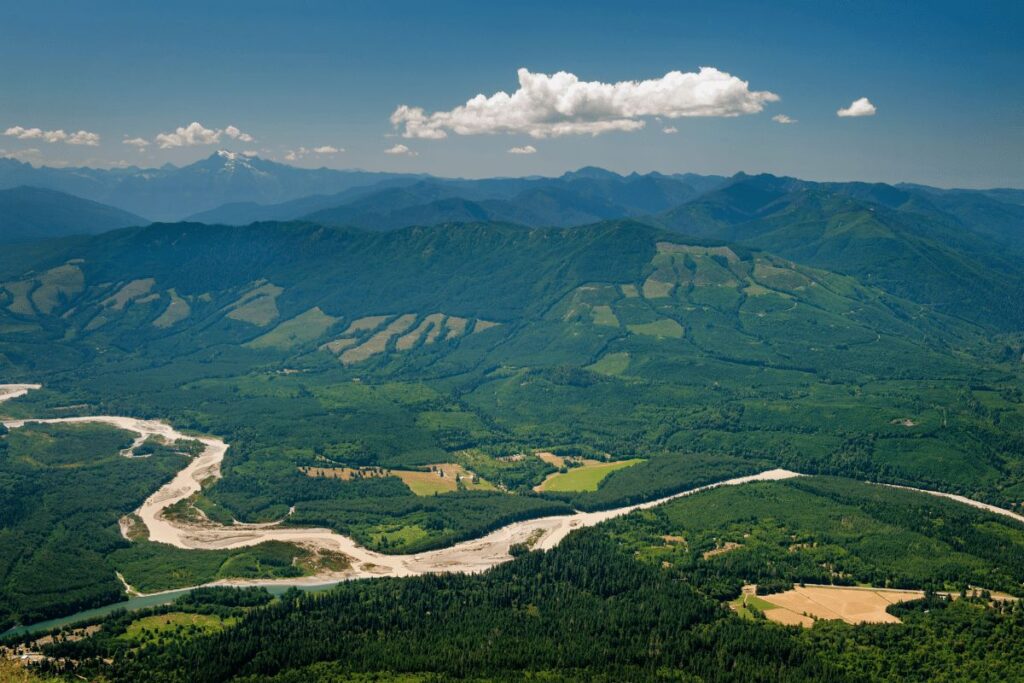
The Skagit Valley Park is an ideal spot for nature-lovers and those looking to get away from the hustle and bustle of everyday life. There are numerous hiking trails that wind through the park, offering stunning views of the surrounding mountains and valleys.
The park also features several campsites, fishing spots, picnic areas, and a number of interpretive programs.
Skagit Valley Provincial Park is also home to an incredible variety of flora, including rare species such as western hemlock and Douglas fir. The park also provides habitat for many birds and mammals, making it a great place to observe wildlife in their natural habitat.
Chilliwack Lake Provincial Park
Chilliwack Lake Provincial Park is a beautiful wildlife viewing area located in the North Cascades National Park. The park is home to a variety of animals, including bears, wolves, moose, and elk. Visitors can explore the park on foot or by car, and there are plenty of opportunities for wildlife watching.
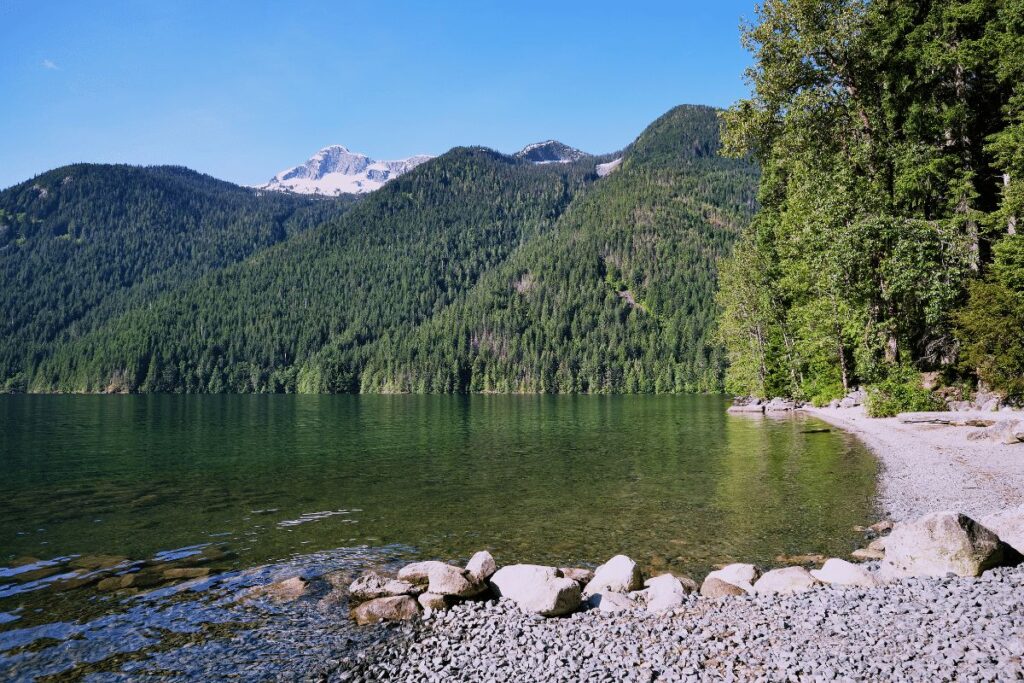
Bears are often seen feeding on berries in the summer months, and elk can be spotted grazing in meadows. Wolves can be heard howling in the distance, and moose are sometimes seen wading in lakes.
The park also features a number of scenic hiking trails, ranging from easy to challenging. There are several alpine lakes in the area that can be accessed by the trails, offering stunning views of the mountains and valleys. Campers can set up tents and outdoor fires at designated campsites throughout the park, and there are also picnic areas available for day use.
This park is part of the Fraser Valley Regional Park District and is open all year round. Visitors should always check current conditions before visiting as weather can be unpredictable in this region.
Ross Lake
Ross Lake is one of the best places in North Cascades National Park to view wildlife. The lake is home to a variety of animals, including black bears, grizzly bears, elk, deer, and moose.
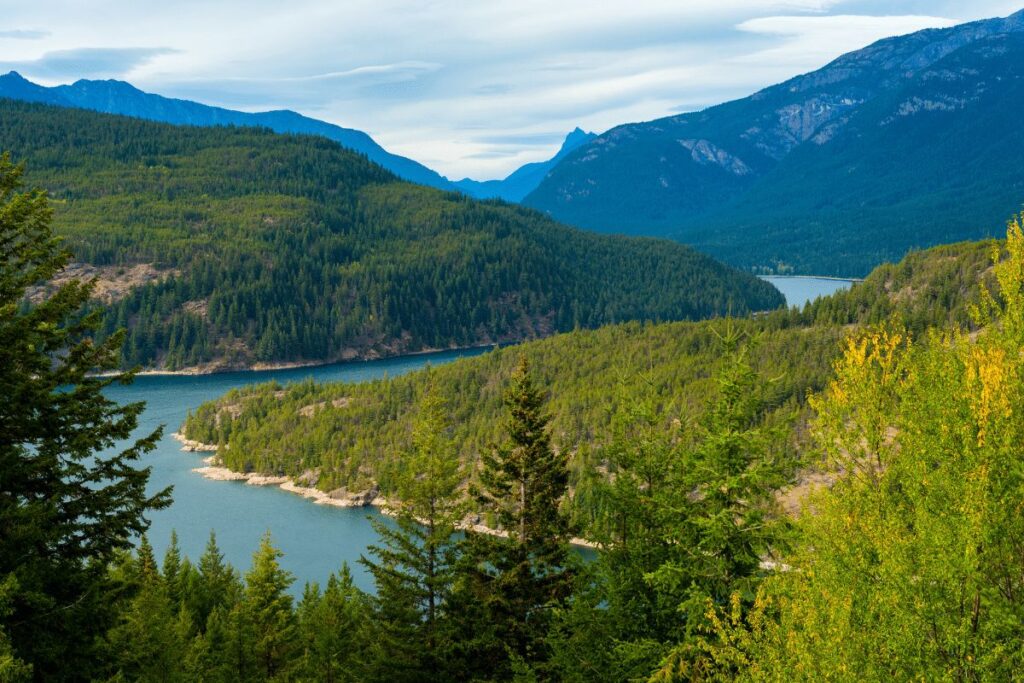
Ross Lake is also a great place to view birds. Over 200 species of birds have been recorded at Ross Lake, including bald eagles, ospreys, and waterfowl.
Visitors can access Ross Lake via the North Cascades Highway (State Route 20). There are several developed campgrounds along the shore of Ross Lake, as well as a number of day-use areas.
Noisy-Diobsud Wilderness
The Noisy-Diobsud Wilderness is one of the best wildlife viewing areas in North Cascades National Park. The wilderness is home to a variety of animals, including bears, cougars, deer, elk, and wolves. Visitors can also expect to see a variety of birds, including eagles and ospreys.
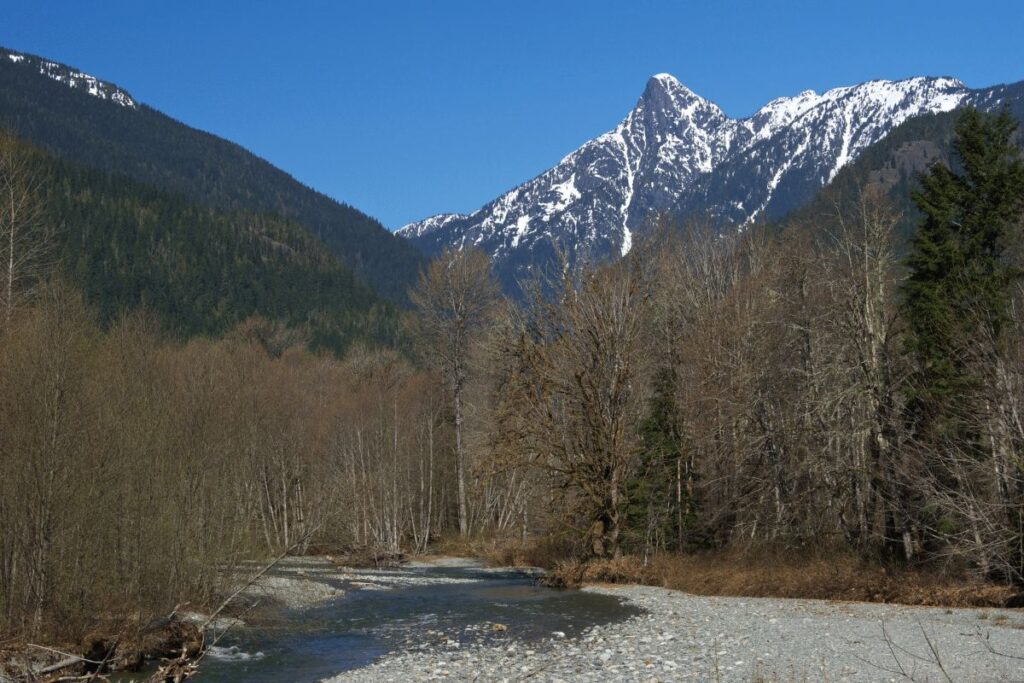
The best time to view wildlife in the Noisy-Diobsud Wilderness is early morning or evening. During these times, animals are more active and are easier to spot. visitors should be sure to bring binoculars and a camera, as well as plenty of food and water.
The Noisy-Diobsud Wilderness is also a great spot for camping, hiking, and fishing. There are several trails that lead to various lakes where visitors can catch fish. The wilderness also provides plenty of stunning views and abundant opportunities for photographing wildlife.
The Noisy-Diobsud Wilderness is an amazing place to explore and discover the wonders of nature. Whether you are looking for a peaceful hike or an exciting wildlife viewing experience, the Noisy-Diobsud Wilderness has something to offer everyone.
Conclusion
North Cascades National Park is a wildlife viewer’s dream and the best places to explore its rich biodiversity are varied and far-reaching. From the lush temperate rainforests of the western slopes to the rugged alpine tundra of Stehekin Valley, there is something for everyone here!
With proper planning and precautions are taken, you can embark on a memorable journey into one of America’s most pristine wildernesses. So go wild at North Cascades National Park – get out there and experience all that this incredible park has to offer!
We had an amazing time exploring the North Cascades National Park and all of its wildlife. We saw a variety of animals, including bald eagles, black bears, elk, mountain goats and more.
Hiking through this beautiful park was truly a unique experience that we will never forget! Whether you are looking for a relaxing hike or an adventure filled with wild animals, North Cascades National Park is definitely worth checking out!

